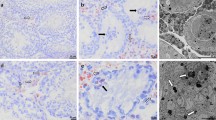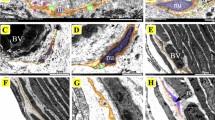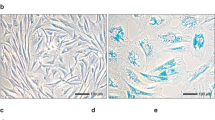Abstract
BOTH J. R. Baker1 and O. L. Thomas2 have expressed the view that ‘lipochondria’ (discrete sudanophilic droplets supravitally stainable with methylene blue and neutral red) are transformed into the classical Golgi network during the processes of fixation and impregnation with silver and osmic acid techniques. Thomas3 also considers that mitochondria are involved in the development of the classical Golgi network during fixation.
This is a preview of subscription content, access via your institution
Access options
Subscribe to this journal
Receive 51 print issues and online access
$199.00 per year
only $3.90 per issue
Buy this article
- Purchase on Springer Link
- Instant access to full article PDF
Prices may be subject to local taxes which are calculated during checkout
Similar content being viewed by others
References
Baker, J. R., Nature, 168, 1089 (1951).
Thomas, O. L., Science, 115, 657 (1952).
Thomas, O. L., Quart. J. Micro. Sci., 89, 333 (1948).
O'Leary, J. L., Anat. Rec., 45, 27 (1930).
Bensley, R. R., Amer. J. Anat., 12, 297 (1911).
Beams, H. W., van Breemen, V. L., Newfang, Dorothy M., and Evans, T. C., J. Comp. Neur., 96, 249 (1952).
Dalton, A. J., Z. f. Zellforsch., 36, 522 (1952).
Author information
Authors and Affiliations
Rights and permissions
About this article
Cite this article
DALTON, A., FELIX, M. ‘Lipochondria’ and the Golgi Substance in Epithelial Cells of the Epididymis. Nature 170, 541–542 (1952). https://doi.org/10.1038/170541b0
Issue Date:
DOI: https://doi.org/10.1038/170541b0
This article is cited by
Comments
By submitting a comment you agree to abide by our Terms and Community Guidelines. If you find something abusive or that does not comply with our terms or guidelines please flag it as inappropriate.



